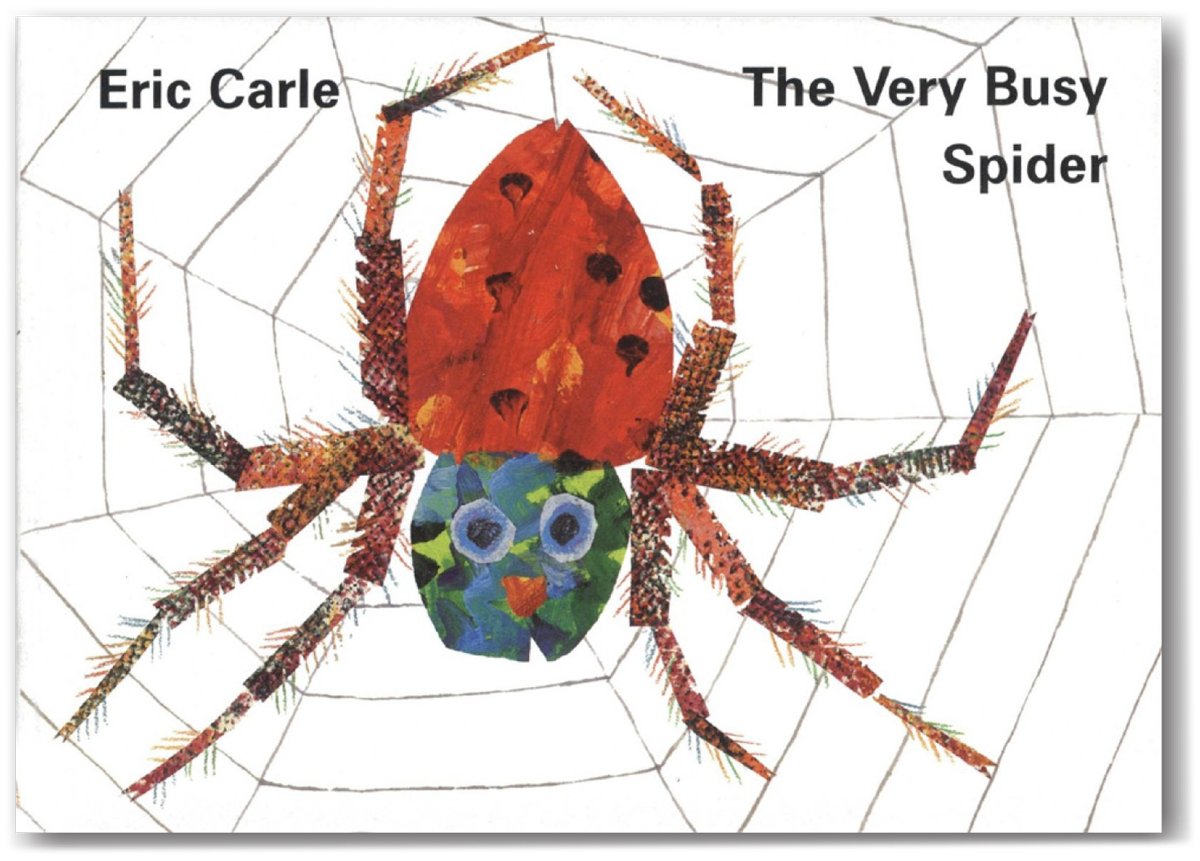
As the plot unfolds, young readers participate in a farm tour led by animals that try to distract a busy spider from her hard work of spinning. She courageously declines each animal’s request, following through with her task until at the end of the story, when she captures a fly for dinner. The moral of this story is strong, yet presented gently—hard work pays off. Even the youngest of readers catches a glimpse of the rewards a solid work effort can produce in the face of distraction.
Another way to make a visual representation of eight is to draw a spider. Begin by using a black crayon to write a large numeral eight on a white sheet of paper. This will be the spider’s body. Add four straight legs from one side of the body. Do the same on the other side of the body. Write 4 + 4 = 8 under the spider. Say, “Four legs plus four more legs equals eight total spider legs.”
A tally is another way to make a visual picture of quantity, allowing children to see groups of five and then add extras. Show how to tally eight—four straight tallies with a diagonal cross tally and three extra tallies to the side of the group of five. Practice counting while making the tally marks. Write the equation 5 + 3 = 8 under the tally—the numeral five under the group and the numeral three under the extras—to show how two groups can be added to make a bigger group.
Take a walk in a wooded area or local park. Look for spider webs and compare the designs of the webs seen. Take photographs of the webs discovered while on the walk, and upon arriving home, identify them.
Find a paper dinner plate. Paint the plate black. Cut eight strips of black construction paper. Fold each strip (leg) accordion style and attach to the plate, four accordion-folded legs to a side. Add eyes—painted, cut out, or googly. Punch a hole in the center of the plate and hang with a piece of string from a doorway. Sing “The Eensy Weensy Spider.”
Make marble-painted spider webs. Place a piece of black construction paper in a flat box. Dip a marble in white paint and place it in the box. Tilt the box from one side to the other and watch the web appear. Recoat the marble as needed until the web is complete. Make a spider to place in the web.
Make a spider snack. Use a large marshmallow to represent the spider’s abdomen and a small marshmallow to represent the cephalothorax. Attach to one another with a toothpick. Stick four small stick pretzels into the left side of the marshmallow body and four into the right.
“Little Miss Muffet” has been sung for generations. This English nursery rhyme is a fun way to reinforce rhyming words. Sing the song together and act out the story, giving each person an opportunity to act out each role..
- Are You A Spider? by Judy Allen (2000; reprinted Kingfisher, 2003)
- Spinning Spiders by Melvin Burger (HarperCollins, 2003)
- Spiders by Gail Gibbons (Holiday House, 1993)
- Be Nice to Spiders by Margaret Bloy Graham (HarperCollins, 1967)
- About Arachnids by Cathryn Sill (Peachtree Publishing Company, 2006)
Our family has found it helpful to keep field guides handy as we venture outside to observe and discover. The National Audubon Society, for example, published Field Guide to Insects and Spiders: North America – National Audubon Society Field Guides series (Knopf, 1980). These are often available in local libraries.
If your little learner enjoyed The Very Busy Spider, Eric Carle wrote several companion books in the series, including The Very Hungry Caterpillar (The World of Eric Carle, 1981), The Grouchy Ladybug (Turtleback Books, 1996), and The Very Quiet Cricket (The World of Eric Carle, 1990). Each book focuses on a specific character trait. Should your family be looking for a read-aloud for multiple ages, consider Charlotte’s Web by E. B. White (1952; reprinted HarperCollins, 2012). No matter which books you choose, embrace the time to read, think, and delight in conversations together.

